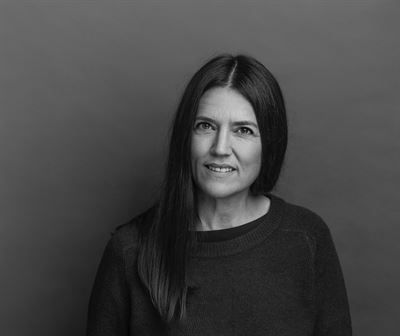Marknadsnyheter
Lynparza in combination with bevacizumab, and as a monotherapy, demonstrates clinically meaningful survival benefit in 1st-line advanced ovarian cancer across two Phase III trials
Landmark 5-year follow-up of PAOLA-1 Phase III trial demonstrated Lynparza plus bevacizumab meaningfully extended survival with 65.5% of HRD-positive patients surviving 5 years vs. 48.4% treated with bevacizumab and placebo.
SOLO-1 Phase III trial demonstrated 67% of advanced ovarian cancer patients with BRCA mutations treated with Lynparza were alive at 7 years vs. 47% on placebo.
Positive long-term follow-up results from the PAOLA-1 and SOLO-1 Phase III trials of AstraZeneca and MSD’s Lynparza (olaparib) with or without bevacizumab demonstrated clinically meaningful improvements in overall survival (OS). Further results showed class-leading progression-free survival (PFS) in combination with bevacizumab for homologous recombination deficiency (HRD)-positive patients, versus active comparator, bevacizumab, and as monotherapy for patients with BRCA mutations, versus placebo, respectively.
Both trials which were conducted in biomarker-selected, newly diagnosed patients with advanced ovarian cancer in the 1st-line maintenance setting also demonstrated a consistent safety profile.1,2
The results for PAOLA-1 (Abstract #LBA29) and SOLO-1 (Abstract #517O) were presented on 9 September at the 2022 European Society of Medical Oncology (ESMO) and SOLO-1 results were published in Journal of Clinical Oncology.
Ovarian cancer is one of the most common gynaecologic cancers, with a poor prognosis and a high mortality rate.3 Over two thirds of patients are diagnosed with advanced disease, and approximately 50-70% of these patients die within five years.4,5 Up to one in five women with advanced ovarian cancer have a BRCA mutation, and roughly half of women have HRD-positive tumours (which includes those with a BRCA mutation).6-8
Professor Isabelle Ray-Coquard, principal investigator from the PAOLA-1 trial and President of the Gineco group, said: “For women facing an advanced ovarian cancer diagnosis who are HRD-positive, a targeted treatment in the 1st-line maintenance setting is critical to helping them live longer. These latest results at the five-year landmark demonstrate that olaparib with bevacizumab reduces the risk of death by 38% in HRD-positive patients compared to bevacizumab alone, further reinforcing the clinically meaningful long-term survival benefit of this combination. This should be promising news for both clinicians and patients, as we see these additional data show that this combination may allow patients more time with family and loved ones. These results also highlight the importance of biomarker testing as part of a precision medicine approach to guide treatment decisions in ovarian cancer patients.”
Professor Paul DiSilvestro, investigator from the SOLO-1 trial and Director of the Program in Women’s Oncology at Women and Infants Hospital in Providence, Rhode Island, said: “The long-term results from SOLO-1 confirm that olaparib continues to elicit a clinically meaningful improvement in overall survival in the 1st-line maintenance setting for more than seven years. Achieving long-term survival for patients with newly diagnosed advanced ovarian cancer is critical because the 1st-line setting offers the greatest potential to impact patient survival.”
Susan Galbraith, Executive Vice President, Oncology R&D, AstraZeneca, said: “Historically the five year survival rate of newly diagnosed patients with advanced ovarian cancer is 30-50%. In that context, it is phenomenal to share the long term overall survival data from both PAOLA-1 and SOLO-1, with two out of three patients still alive in these trials. We continue to believe in Lynparza’s ability to help biomarker-selected patients with advanced ovarian cancer to achieve better outcomes.”
Dr Eliav Barr, Senior Vice President, Head of Global Clinical Development and Chief Medical Officer, MSD Research Laboratories, said: “These latest data from the PAOLA-1 and SOLO-1 trials further highlight the importance of HRD testing, including for BRCA1/2 mutations, for all newly diagnosed advanced ovarian cancer patients at the point of diagnosis. Maintenance therapy with Lynparza may provide certain patients with HRD-positive and/or BRCA-mutated advanced ovarian cancer the opportunity to live longer.”
Updated results from the PAOLA-1 Phase III trial
Updated results from the PAOLA-1 Phase III trial demonstrate that Lynparza plus bevacizumab increased median overall survival to 56.5 months versus 51.6 months with bevacizumab alone, in patients with newly diagnosed advanced ovarian cancer irrespective of HRD status. This increase was not statistically significant.
In HRD-positive patients, Lynparza plus bevacizumab provided a clinically meaningful improvement in overall survival, reducing the risk of death by 38% versus bevacizumab (based on a HR of 0.62; 95% CI 0.45-0.85) despite PAOLA-1 having 30% Stage IV patients. 65.5% of patients treated with Lynparza plus bevacizumab were still alive at five years versus 48.4% of those treated with bevacizumab alone. Lynparza plus bevacizumab also improved median PFS to almost four years (46.8 months) versus 17.6 months with bevacizumab plus placebo and 46.1% of patients treated with Lynparza plus bevacizumab remain progression free at five years versus 19.2% of patients treated with bevacizumab alone. The safety and tolerability profile of Lynparza in this trial was in line with that observed in prior clinical trials, with no new safety signals.
Updated results from the SOLO-1 Phase III trial
Updated results from the SOLO-1 Phase III trial demonstrate that Lynparza provided a clinically meaningful improvement in overall survival (OS) versus placebo in patients with BRCA-mutated (BRCAm) newly diagnosed advanced ovarian cancer, reducing the risk of death by 45% (based on an HR of 0.55; 95% CI 0.40-0.76; nominal p=0.0004 [not statistically significant]). Median OS was still not reached with Lynparza versus 75.2 months with placebo. At the seven-year descriptive OS analysis, 67% of Lynparza patients were alive versus 47% of placebo patients (44% of whom had a subsequent PARP inhibitor) and 45% of Lynparza patients versus 21% of placebo patients were alive and had not received a first subsequent treatment.
Additional data showed median time to first subsequent therapy was 64 months with Lynparza versus 15.1 months with placebo. The safety and tolerability profile of Lynparza in this trial was in line with that observed in prior clinical trials, with no new safety signals.
Summary of results
| PAOLA-1 | |||
| Lynparza + bevacizumab(n=537) | Placebo + bevacizumab (n=269) | ||
| OS1 | |||
| Number of patients with events (%) | 288 (53.6) | 158 (58.7) | |
| Median OS (in months) | 56.5 | 51.6 | |
| HR (95% CI)p-value | 0.92 (0.76,1.12) 0.4118 | ||
| OS by HRD status2 | |||
| HRD positive (including tBRCAm) | |||
| Number of patients randomised | 255 | 132 | |
| Number of patients with events (%) | 93 (36.5) | 69 (52.3) | |
| Median (in months) | 75.2 | 57.3 | |
| HR (95% CI) | 0.62 (0.45, 0.85) | ||
| HRD positive (excluding tBRCAm) | |||
| Number of patients randomised | 97 | 55 | |
| Number of patients with events (%) | 44 (45.4) | 32 (58.2) | |
| Median (in months) | Not reached | 52.0 | |
| HR (95% CI) | 0.71 (0.45, 1.13) | ||
| BRCAm | |||
| Number of patients randomised | 157 | 80 | |
| Number of patients with events (%) | 48 (30.6) | 37 (46.3) | |
| Median (in months) | 75.2 | 66.9 | |
| HR (95% CI) | 0.60 (0.39, 0.93) | ||
| HRD negative | |||
| Number of patients randomised | 192 | 85 | |
| Number of patients with events (%) | 140 (72.9) | 58 (68.2) | |
| Median (95% CI) (in months) | 36.8 | 40.4 | |
| HR (95% CI) | 1.19 (0.88, 1.63) | ||
| PFS3 by HRD status2 | |||
| HRD positive (including tBRCAm) | |||
| Number of patients randomised | 255 | 132 | |
| Number of patients with events (%) | 136 (53.3) | 104 (78.8) | |
| Median (in months) | 46.8 | 17.6 | |
| HR (95% CI) | 0.41 (0.32, 0.54) | ||
| SOLO-1 | |||
| Lynparza (n=260) | Placebo (n=131) | ||
| OS4 | |||
| Number of patients with events (%) | 84 (32.2) | 65 (49.6) | |
| Median OS (in months) | Not reached | 75.2 | |
| HR (95% CI)p-value5 | 0.55 (0.40, 0.76)0.0004 | ||
| Time to first subsequent therapy | |||
| Number of patients with events (%) | 135 (51.9) | 98 (74.8) | |
| Median (95% CI) (in months) | 64.0 | 15.1 | |
| HR (95% CI) | 0.37 (0.28–0.48) | ||
| Time to second subsequent therapy | |||
| Number of patients with events (%) | 110 (42.3) | 80 (61.1) | |
| Median (95% CI) (in months) | 93.2 | 40.7 | |
| HR (95% CI) | 0.5 (0.37, 0.67) | ||
1. OS analysis was done at 56% maturity (448 events in 797 patients) and boundary for significance 0.0001; statistical significance not reached.
2. Exploratory subgroup analysis by HRD status. The HRD status of patients in PAOLA-1 was determined from post-randomisation testing of tumour samples using the Myriad myChoice HRD plus test
3. Investigator-assessed PFS (RECIST 1.1)
4. OS analysis was done at 38.1% maturity (149 events in 391 patients) and boundary for significance 0.01; statistical significance not reached. Survival follow up continues and further analyses were planned.
5. P<0.0001 required to declare statistical significance
Lynparza is approved as maintenance treatment of platinum-sensitive relapsed ovarian cancer and as both monotherapy and in combination with bevacizumab for the 1st-line maintenance treatment of BRCA-mutated (BRCAm) and HRD-positive advanced ovarian cancer, respectively.
Notes
Ovarian cancer
Ovarian cancer is the eighth most common cancer in women worldwide.9 There were more than 313,000 new cases of ovarian cancer in 2020, and over 207,000 deaths. The 5-year survival rate of newly diagnosed advanced ovarian cancer patients has typically been 30-50%.4,5 Roughly half of women with advanced ovarian cancer have homologous recombination deficiency (HRD)-positive tumours including those with a BRCA mutation and up to one in five women have a BRCA mutation.6-8 The primary aim of 1st-line treatment is to delay disease progression for as long as possible with the intent to achieve long-term remission.10-12
PAOLA-1
PAOLA-1 is a double-blinded Phase III trial testing the efficacy and safety of Lynparza added to standard-of-care bevacizumab versus bevacizumab alone, as a 1st-line maintenance treatment for newly diagnosed advanced FIGO Stage III-IV high-grade serous or endometroid ovarian, fallopian tube, or peritoneal cancer patients who had a complete or partial response to 1st-line treatment with platinum-based chemotherapy and bevacizumab. AstraZeneca and MSD announced in August 2019 that the trial met its primary endpoint of PFS in the overall trial population.
PAOLA-1 is an ENGOT (European Network of Gynaecological Oncological Trial groups) trial, sponsored by ARCAGY Research (Association de Recherche sur les CAncers dont GYnécologiques) on behalf of GINECO (Groupe d’Investigateurs National des Etudes des Cancers Ovariens et du sein). ARCAGY-GINECO is an academic group specialising in clinical and translational research in patients’ cancers and a member of the GCIG (Gynecologic Cancer InterGroup).
SOLO-1
SOLO-1 is a Phase III randomised, double-blinded, placebo-controlled, multicentre trial to evaluate the efficacy and safety of Lynparza tablets (300 mg twice daily) as maintenance monotherapy compared with placebo, in newly-diagnosed patients with advanced BRCAm ovarian cancer following platinum-based chemotherapy. The trial randomised 391 patients with a deleterious or suspected deleterious BRCA1 or BRCA2 mutation who were in clinical complete or partial response following platinum-based chemotherapy. Patients were randomised (2:1) to receive Lynparza or placebo for up to two years or until disease progression (at the investigator’s discretion). The primary endpoint was PFS and key secondary endpoints included time to second disease progression or death, time to first subsequent treatment and overall survival. AstraZeneca and MSD announced in June 2018 that the trial met its primary endpoint of PFS in the overall trial population.
BRCA
BRCA1 and BRCA2 are human genes that produce proteins responsible for repairing damaged DNA and play an important role maintaining the genetic stability of cells.13 When either of these genes is mutated or altered such that its protein product either is not made or does not function correctly, DNA damage may not be repaired properly, and cells become unstable. As a result, cells are more likely to develop additional alterations that can lead to cancer. Cancers with BRCA mutations are more likely to be sensitive to PARP inhibitors including Lynparza.13-16
Homologous recombination deficiency
HRD, which defines a subgroup of ovarian cancer, encompasses a wide range of genetic abnormalities, including BRCA mutations and beyond. As with BRCA gene mutations, HRD interferes with normal cell DNA repair mechanisms and confers sensitivity to PARP inhibitors including Lynparza.2
Lynparza
Lynparza (olaparib) is a first-in-class PARP inhibitor and the first targeted treatment to block DNA damage response (DDR) in cells/tumours harbouring a deficiency in homologous recombination repair (HRR), such as those with mutations in BRCA1 and/or BRCA2, or those where deficiency is induced by other agents (such as new hormonal agents – NHAs).
Inhibition of PARP proteins with Lynparza leads to the trapping of PARP bound to DNA single-strand breaks, stalling of replication forks, their collapse and the generation of DNA double-strand breaks and cancer cell death.
Lynparza is currently approved in a number of countries across multiple tumour types including maintenance treatment of platinum-sensitive relapsed ovarian cancer and as both monotherapy and in combination with bevacizumab for the 1st-line maintenance treatment of BRCA-mutated (BRCAm) and homologous recombination repair deficient (HRD)-positive advanced ovarian cancer, respectively; for gBRCAm, HER2-negative metastatic breast cancer (in the EU and Japan this includes locally advanced breast cancer); for gBRCAm, HER2-negative high-risk early breast cancer (in Japan this includes all BRCAm HER2-negative high-risk early breast cancer); for gBRCAm metastatic pancreatic cancer; and HRR gene-mutated metastatic castration-resistant prostate cancer (BRCAm only in the EU and Japan).
Lynparza, which is being jointly developed and commercialised by AstraZeneca and MSD, is the foundation of AstraZeneca’s industry-leading portfolio of potential new medicines targeting DDR mechanisms in cancer cells.
The AstraZeneca and MSD strategic oncology collaboration
In July 2017, AstraZeneca and Merck & Co., Inc., Kenilworth, NJ, US, known as MSD outside the US and Canada, announced a global strategic oncology collaboration to co-develop and co-commercialise Lynparza, the world’s first PARP inhibitor, and Koselugo (selumetinib), a mitogen-activated protein kinase (MEK) inhibitor, for multiple cancer types.
Working together, the companies will develop Lynparza and Koselugo in combination with other potential new medicines and as monotherapies. The companies will develop Lynparza and Koselugo in combination with their respective PD-L1 and PD-1 medicines independently.
AstraZeneca in oncology
AstraZeneca is leading a revolution in oncology with the ambition to provide cures for cancer in every form, following the science to understand cancer and all its complexities to discover, develop and deliver life-changing medicines to patients.
The Company’s focus is on some of the most challenging cancers. It is through persistent innovation that AstraZeneca has built one of the most diverse portfolios and pipelines in the industry, with the potential to catalyse changes in the practice of medicine and transform the patient experience.
AstraZeneca has the vision to redefine cancer care and, one day, eliminate cancer as a cause of death.
AstraZeneca
AstraZeneca (LSE/STO/Nasdaq: AZN) is a global, science-led biopharmaceutical company that focuses on the discovery, development, and commercialisation of prescription medicines in Oncology, Rare Diseases, and BioPharmaceuticals, including Cardiovascular, Renal & Metabolism, and Respiratory & Immunology. Based in Cambridge, UK, AstraZeneca operates in over 100 countries and its innovative medicines are used by millions of patients worldwide. Please visit astrazeneca.com and follow the Company on Twitter @AstraZeneca.
Contacts
For details on how to contact the Investor Relations Team, please click here. For Media contacts, click here.
References
- Ray-Coquard I, et al. Olaparib plus Bevacizumab as First-Line Maintenance in Ovarian Cancer. N Engl J Med. 2019;381:2416-2428.
- Moore K, et al. Maintenance Olaparib in Patients with Newly Diagnosed Advanced Ovarian Cancer. New England Journal of Medicine. 2018; 379:2495-2505.
- Momenimovahed Z, et al. Ovarian Cancer in The World: Epidemiology And Risk Factors. Int J Womens Health. 2019 Apr 30;11:287-299.
- Torre A, et al. Ovarian Cancer Statistics. CA Cancer J Clin. 2018 Jul; 68(4):284–296.
- National Cancer Institute. Cancer Stat Facts: Ovarian Cancer. Available at https://seer.cancer.gov/statfacts/html/ovary.html Accessed September 2022.
- Pothuri B. BRCA1- and BRCA2-related mutations: therapeutic implications in ovarian cancer. Ann of Oncol. 2018;24(8):822-827.
- Moschetta M, et al. BRCA somatic mutations and epigenetic BRCA modifications in serous ovarian cancer. Ann Oncol. 2016 Aug;27(8):1449-55.
- Bonadio R, et al. Homologous recombination deficiency in ovarian cancer: a review of its epidemiology and management. Clinics (Sao Paulo). 2018 Aug 20;73(suppl 1):e450s.
- World Cancer Research Fund International. Ovarian Cancer Statistics. Available at https://www.wcrf.org/cancer-trends/ovarian-cancer-statistics/#:~:text=Latest%20ovarian%20cancer%20data,of%20ovarian%20cancer%20in%202020. Accessed September 2022.
- Raja F, et al. Optimal first-line treatment in ovarian cancer. Ann of Oncol. 2012;23(10):118-127.
- NHS Choices, Ovarian Cancer Available at https://www.nhs.uk/conditions/ovarian-cancer/treatment/ Accessed September 2022.
- Ledermann J, et al. Newly diagnosed and relapsed epithelial ovarian carcinoma: ESMO Clinical Practice Guidelines for diagnosis, treatment and follow-up. Ann Oncol. 2013 Oct;24 Suppl 6:vi24-32.
- Roy R, et al. BRCA1 and BRCA2: different roles in a common pathway of genome protection. Nat Rev Cancer. 2016;12(1):68-78.
- Wu J, et al. The role of BRCA1 in DNA damage response. Protein Cell. 2010;1(2):117-123.
- Gorodetska I, et al. BRCA Genes: The Role in Genome Stability, Cancer Stemness and Therapy Resistance. Journal of Cancer. 2019;10:2109-2127.
- Li H, et al. PARP inhibitor resistance: the underlying mechanisms and clinical implications. Molecular Cancer. 2020;19:1-16.
Marknadsnyheter
Regeringen föreslår lättnader i byggkraven för studentbostäder
Regeringen har beslutat om en lagrådsremiss med förslag till lättnader i byggkraven för studentbostäder. Syftet är att öka möjligheterna till flexibilitet vid byggandet.
– På många studieorter är det svårt för studenter att hitta boende. Därför behöver byggregelverket förenklas. Syftet är att möjliggöra för fler studentbostäder genom sänkta byggkostnader och ökad flexibilitet, säger infrastruktur- och bostadsminister Andreas Carlson.
Förslaget innebär att det blir möjligt att göra undantag från kraven på tillgänglighet och användbarhet i en byggnad som innehåller studentbostäder. Undantagen ska kunna tillämpas vid både nyproduktion och vid ändring av en byggnad.
Det ska vara möjligt att göra undantag för högst 80 procent av studentbostäderna i ett byggprojekt. Minst 20 procent av studentbostäderna ska fortfarande uppfylla gällande krav på tillgänglighet och användbarhet för personer med nedsatt rörelse- eller orienteringsförmåga.
Lagändringen ger större flexibilitet vid byggande av studentbostäder och skapar fler tänkbara sätt att utforma planlösningar. Till exempel kan bostadsytan minskas och fler bostäder rymmas inom en given yta.
De föreslagna undantagen ska inte hindra personer med funktionsnedsättning att vara delaktiga i sociala sammanhang. En studentbostad som omfattas av undantagen ska kunna besökas av en person med nedsatt rörelse- eller orienteringsförmåga.
Regeringen breddar också definitionen av studentbostäder till att inkludera all vuxenutbildning för att göra det möjligt för fler kommuner att erbjuda studentbostäder.
Förslagen föreslås träda i kraft den 1 juli 2025.
Lagrådsremissen: Lättnader i byggkraven för studentbostäder – Regeringen.se
Presskontakt
Ebba Gustavsson
Pressekreterare hos infrastruktur- och bostadsminister Andreas Carlson
Telefon (växel) 08-405 10 00
Mobil 076-12 70 488
ebba.gustavsson@regeringskansliet.se
Marknadsnyheter
“Vi behöver tillsammans enas om vettiga avtal, som sätter standard för branschen”


Sveriges Radios Kulturnytt gör just nu en mycket välkommen granskning av villkoren i musikbranschen. Igår lyftes artisten Siw Malmkvists situation med ett avtal som inte förnyats på över 60 år. Hennes situation är tyvärr långt ifrån unik. Musikerförbundet har länge uppmärksammat att majorbolagen fortsätter att betala extremt låga royaltynivåer till artister vars kontrakt skrevs på 1960-talet – en tid då digital streaming inte existerade.
– Jag kan intyga att artisterna som talar ut i P1 är långt ifrån ensamma om sin situation och vi uppmanar deras artistkollegor att gå ut med sitt tydliga stöd till de som vågar bryta tystnaden om oskäliga ersättningar, säger Musikerförbundets ordförande Karin Inde.
Musiker och artister skapar det värde som skivbolagen tjänar pengar på, men ändå ser vi gång på gång hur bolagen behåller stora delar av intäkterna. Att en av Sveriges mest folkkära artister, med en karriär som sträcker sig över decennier, fortfarande har en oskälig royalty är ett tydligt bevis på branschens obalans.
– Tystnadskulturen kring prissättning är enbart bra för bolagen. Både artister och musiker skulle verkligen tjäna på att dela med sig till varandra om hur betalningar och dealar verkligen ser ut. Förstås i trygga, egna rum. Det är bara bolagen som tjänar på att vi inte pratar med varandra om pengar, säger Karin Inde.
Stort tack till de modiga artister som ser till att lyfta problematiken! För att vi ska få till en i grunden mer rättvis musikbransch behöver de stora parterna i sammanhanget – skivbolagen, musikerna och artisterna – göra som de flesta andra svenska branscher lyckas med:
– Vi behöver tillsammans enas om vettiga och balanserade avtal, som sätter standard för branschen. Musikerförbundet är redo att göra vår del i arbetet för bättre villkor i musikbranschen, frågan är om skivbolagen är redo, säger Karin Inde.
Karin Inde
Förbundsordförande
karin.inde@musikerforbundet.se
+46 (0)704447228
Musikerförbundet är fackförbundet för professionella musiker och artister. Vi arbetar för förbättrade upphovsrättsliga och arbetsrättsliga villkor och för att våra medlemmar ska få en rättvis del av de värden de skapar i samhället.
Marknadsnyheter
Bönor från egen kaffeskog, sump till jord – Viking Lines nya kaffe gör gott på många olika sätt


Viking Lines resenärer dricker varje år 8,5 miljoner koppar kaffe. Nu satsar rederiet på ett helt nytt kaffe som ger minskade klimatutsläpp och bättre levnadsvillkor för odlarna. Kaffet från Slow Forest odlas på rederiets egen odling i Laos utan kemiska gödningsmedel, handplockas och rostas därefter i Danmark.
Allt kaffe som serveras på Viking Lines fartyg är nu hållbart producerat Slow Forest-kaffe, odlat på rederiets 75 hektar stora odling på högplatåerna i Laos och rostat i Danmark. Kaffeplantorna odlas bland träd på återbeskogad mark, i stället för på traditionellt skövlade plantager. Viking Lines odling ligger i en kolsänka där målsättningen är att plantera 30 000 träd, vilket innebär nästan 400 träd per hektar. Kaffeskogen förbättrar också den lokala biologiska mångfalden i området.
Odlingen, bearbetningen och rostningen av kaffet hanteras av Slow Forest Coffee. För företaget är det viktigt att produktionskedjan är rättvis och transparent. Utöver miljöfördelarna erbjuder Slow Forest bättre lönevillkor och sjukersättning för byns odlare.
”Den traditionella kaffetillverkningens koldioxidavtryck är stort och merparten av intäkterna går till Europa i stället för produktionsländerna. Vi ville göra annorlunda. Våra kunder vill göra hållbara val, och nu kan de njuta av sitt kaffe med bättre samvete än någonsin tidigare,” berättar Viking Lines restaurangchef Janne Lindholm.
Bönorna till Slow Forest-kaffet får sakta mogna i skuggan av träden, utan kemiska gödningsmedel. De plockas också för hand, vilket avsevärt förbättrar kaffets kvalitet och smak. Viking Lines nya kaffe består till 100 procent av Arabica-bönor, med en balanserad syrlighet samt smak av nötter och choklad. Rostningsprofilen har skapats av den världsberömda danska rostningsmästaren Michael de Renouard.
”Vi valde en mörkrost till fartygets kaffe, vilket passar både finländarnas och svenskarnas nuvarande smakpreferenser gällande rostning. Finländarnas smak gällande kaffe har under de senaste åren utvecklats mot en mörkare rostning. Innan vi gjorde vårt slutgiltiga val testades det nya kaffet i Viking Cinderellas bufférestaurang och personalmässen – och båda testgrupperna gav toppbetyg. Då 8,5 miljoner koppar kaffe bryggs varje år kan inget lämnas åt slumpen!” säger Janne Lindholm.
Viking Lines hållbarhetsmål stannar inte vid produktionskedjan. Kaffesump från fartygen återvinns nämligen som råmaterial för trädgårdsjord. Detta minskar avsevärt användningen av jungfrulig torv vid tillverkningen av mylla.
”Vi har som mål att allt som tagits ombord på fartygen som är möjligt att återvinna ska återanvändas eller återvinnas. Det gäller inte bara kaffet utan även matavfall och till exempel textilier som tas ur bruk. Ett bra exempel på vårt livscykeltänkande är att frityrolja från fartygets restauranger blir till biobränsle för den finska sjöfartsindustrin,” säger Viking Lines hållbarhetschef Dani Lindberg.
Slow Forest Coffee – 5 fakta:
- Slow Forest Coffee är ett kaffeföretag som verkar i Laos, Vietnam och Indonesien i samarbete med över 500 lokala kaffeodlare.
- Företaget grundades år 2019 av Pinja Puustjärvi, driven av en vilja att skydda skogarna i Laos och stötta lokala odlare. Puustjärvi bodde som barn i Laos på grund av sin fars arbete.
- Kaffet odlas i restaurerade kaffeskogar, som binder stora mängder kol och ökar den biologiska mångfalden.
- Det är viktigt för företaget att produktionskedjan är ansvarsfull och transparent, samt att verksamheten gynnar både miljön och de lokala samhällena.
- Slow Forest Coffee betalar odlarna bättre ersättning än genomsnittet i Laos och erbjuder förmåner som underlättar deras liv: förskottsbetalningar, utbildning och möjligheten att låna pengar från en krisfond.
Mera infomation om Slow Forest Coffee här
Tilläggsinformation:
Janne Lindholm, restaurangchef
janne.lindholm@vikingline.com, tel. +358 400 744 806
Dani Lindberg, hållbarhetschef
dani.lindberg@vikingline.com, tel. +358 18 27 000
Johanna Boijer-Svahnström, informationsdirektör
johanna.boijer@vikingline.com, tel. +358 18 270 00
Christa Grönlund, informationschef
christa.gronlund@vikingline.com, tel. +358 9 123 51
-
Analys från DailyFX10 år ago
EUR/USD Flirts with Monthly Close Under 30 Year Trendline
-

 Marknadsnyheter2 år ago
Marknadsnyheter2 år agoUpptäck de bästa verktygen för att analysera Bitcoin!
-
Marknadsnyheter5 år ago
BrainCool AB (publ): erhåller bidrag (grant) om 0,9 MSEK från Vinnova för bolagets projekt inom behandling av covid-19 patienter med hög feber
-
Analys från DailyFX12 år ago
Japanese Yen Breakout or Fakeout? ZAR/JPY May Provide the Answer
-

 Marknadsnyheter2 år ago
Marknadsnyheter2 år agoDärför föredrar svenska spelare att spela via mobiltelefonen
-
Analys från DailyFX12 år ago
Price & Time: Key Levels to Watch in the Aftermath of NFP
-
Analys från DailyFX8 år ago
Gold Prices Falter at Resistance: Is the Bullish Run Finished?
-

 Nyheter7 år ago
Nyheter7 år agoTeknisk analys med Martin Hallström och Nils Brobacke

